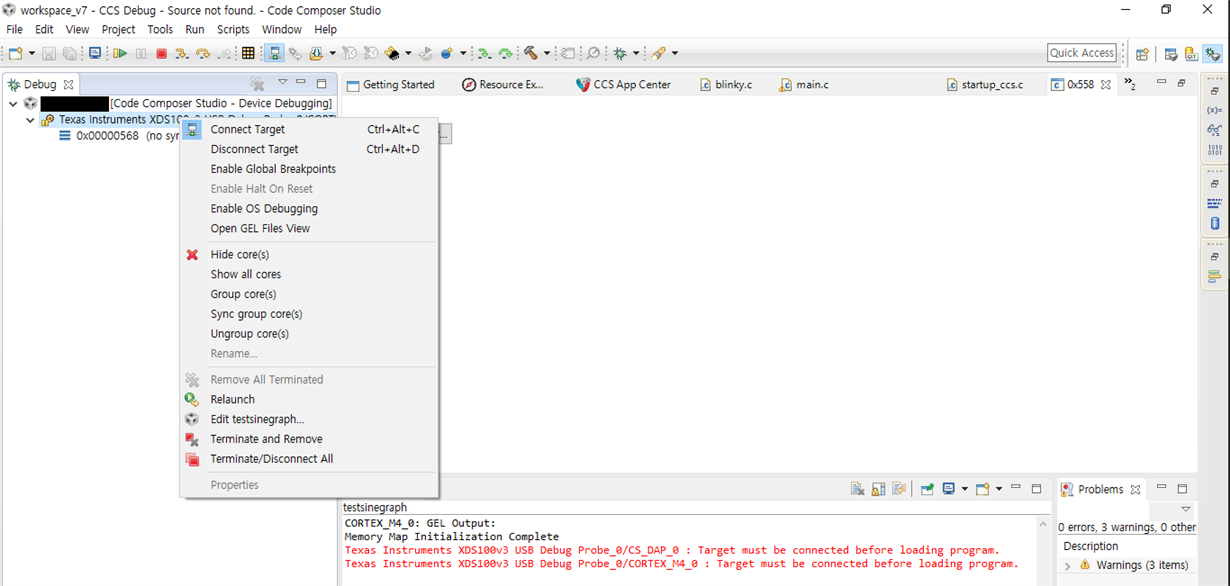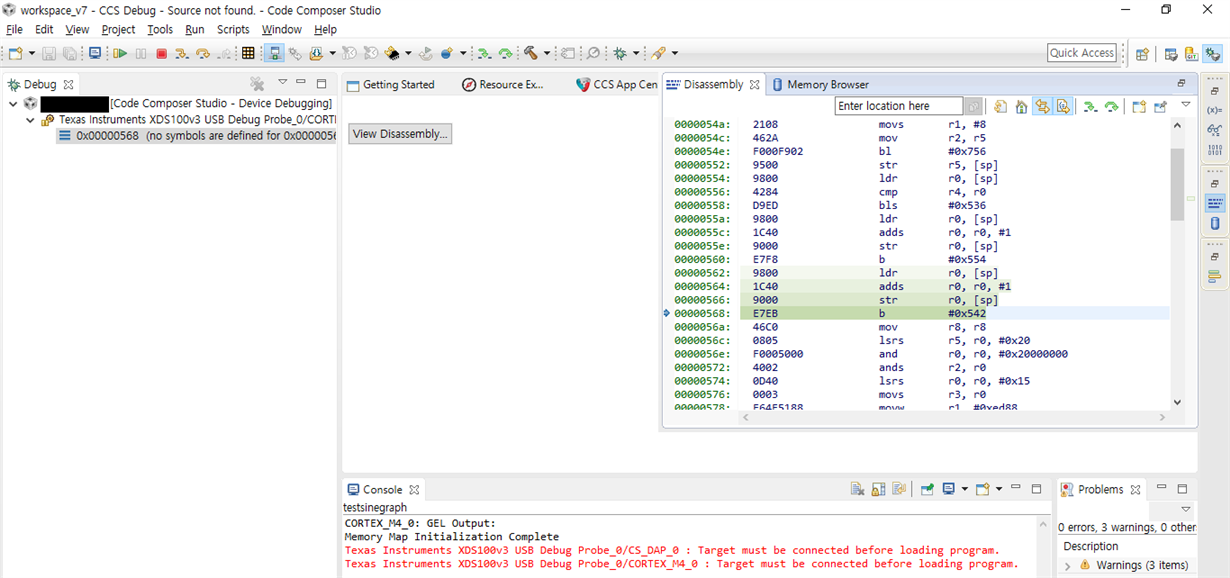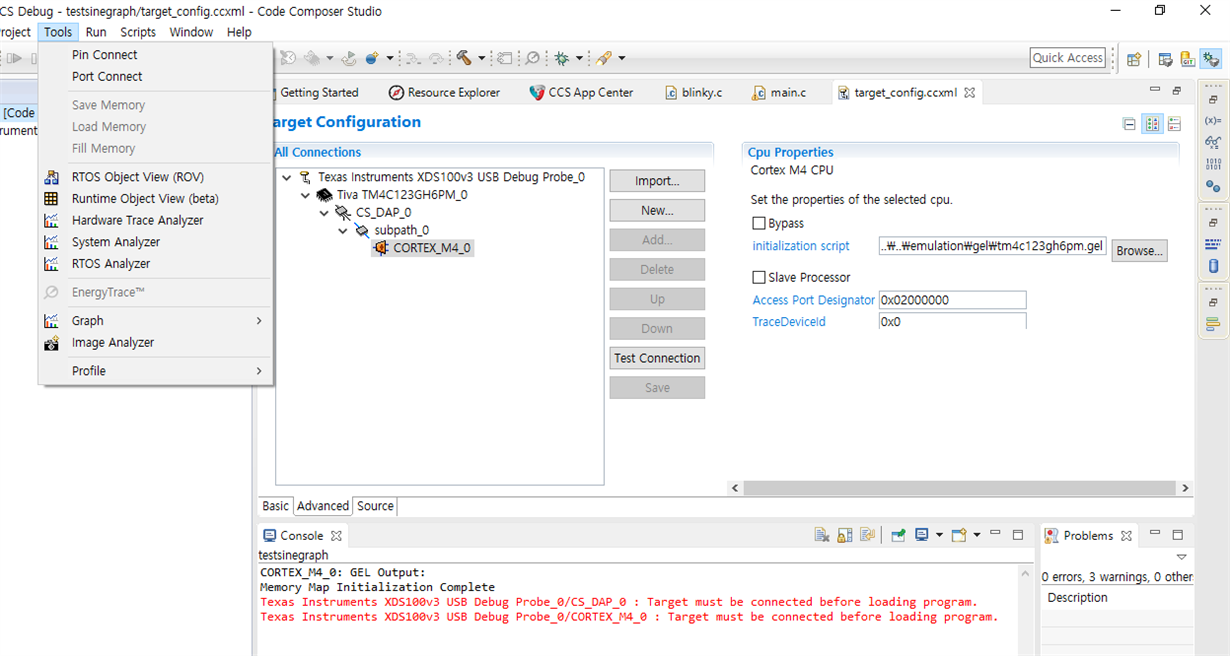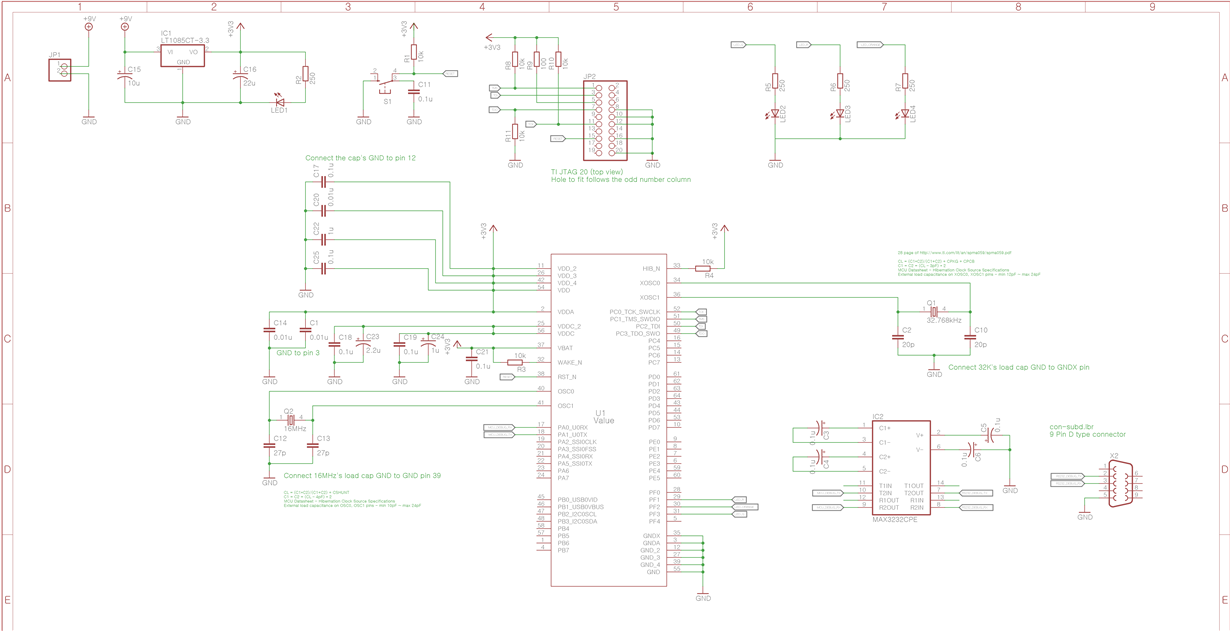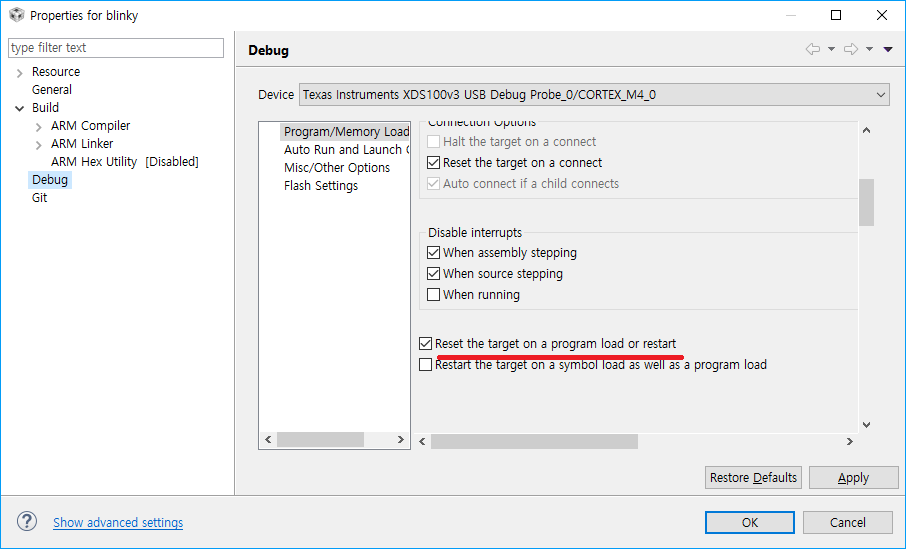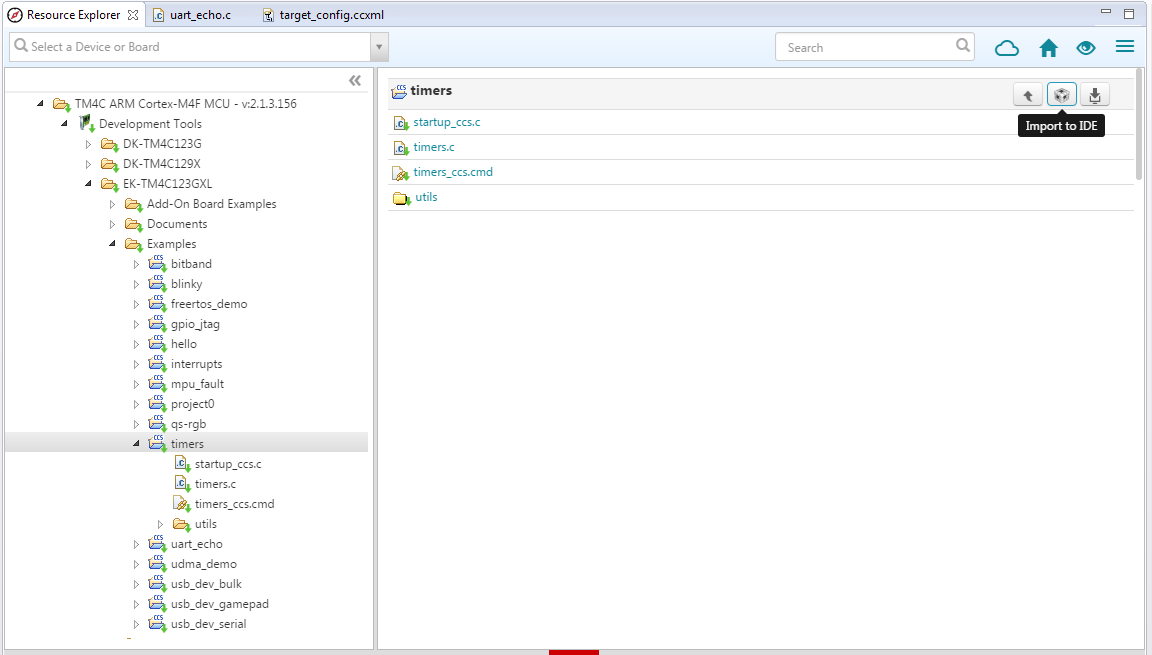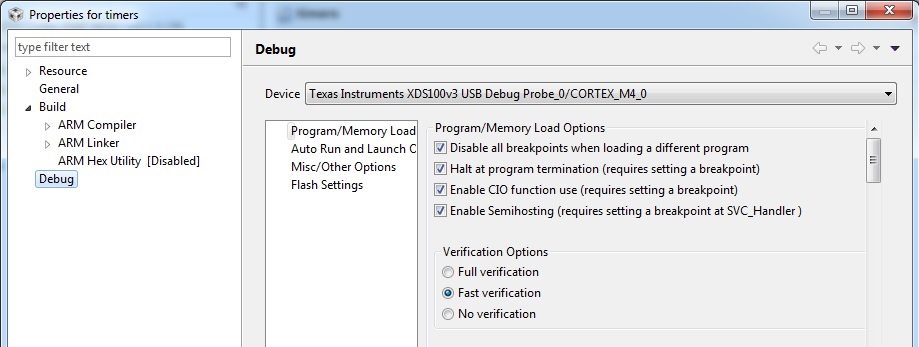Other Parts Discussed in Thread: TM4C123GH6PM
Tool/software: Code Composer Studio
Hi, I created a custom perf board that uses TM4C123GH6PM, CCS 7.1, and XDS100v3 for 4 pins JTAG.
The following error appeared. I tried this Wiki's suggestion.
Although I clicked "Connect Target", nothing happened. I think it continuously runs an infinite loop.
At least, I think the debugger is connected to the TM4C MCU since it runs some assembly codes.
"In the CCS Debug perspective: "Tools -> Debugger Options -> Generic Debugger" and slect "Connect to Target on Debugger Setup"."
That alternative cannot be selected, either. In this case, what should I do to connect the target?


